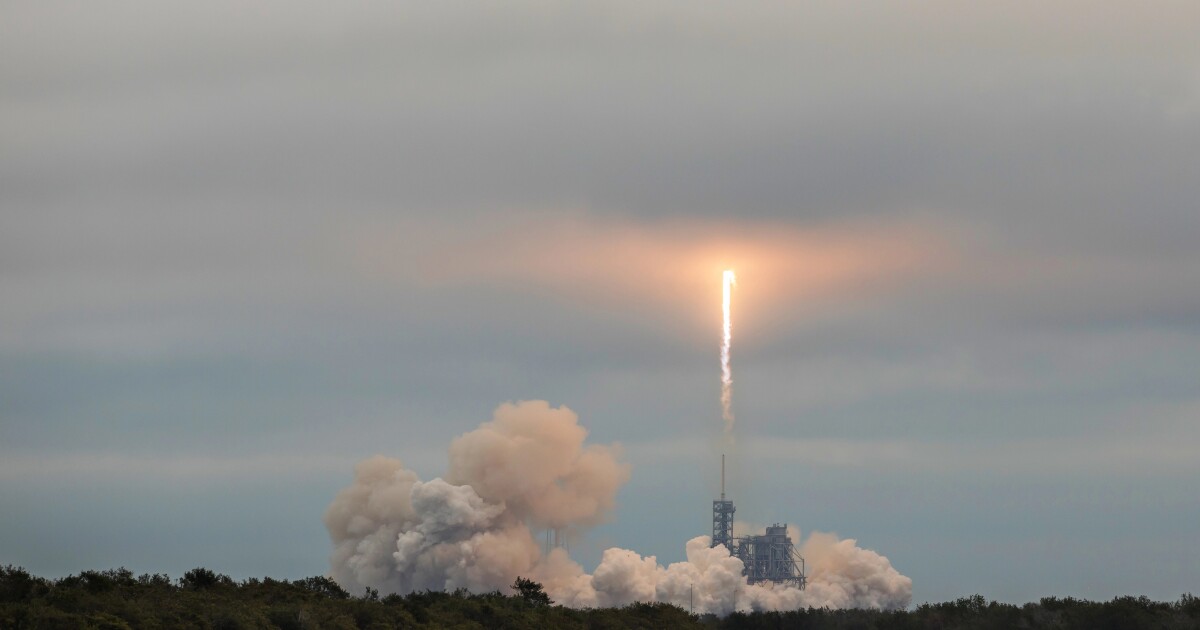As private companies race to make spaceflight routine, Earth’s upper atmosphere has become an unintended testing ground. Each launch is a triumph of human ingenuity, but behind that brilliance lies a quieter equation. One where exhaust and propellant residues react with ozone, thinning the layer that shields life below. It’s a problem scientists are just beginning to quantify, and one that’s rising as fast as the rockets themselves.
In the 1980s, a different atmospheric crisis captured the world’s attention. Synthetic chemicals called chlorofluorocarbons (CFCs), commonly used in refrigerants and aerosol cans, were tearing holes in the ozone layer, letting harmful ultraviolet radiation pour through. The global response was swift and unified: the 1987 Montreal Protocol banned ozone-depleting substances and set firm phase-out timelines. CFC emissions fell by 99%, and by 2025 satellites were reporting one of the smallest Antarctic ozone holes since recovery began.
But as one chapter of atmospheric harm closes, another is quietly beginning. A surge in commercial launches, from satellite networks to space tourism, has created what scientists are describing as a sort of rocket renaissance. Annual launches have more than doubled since 2019, with each one leaving behind a chemical fingerprint high in the stratosphere.
With each mission that burns through the stratosphere, exhaust, chlorine from solid propellants, metallic particles from engines, and black-carbon soot from fuel burns are left in its wake. Together, these residues do more than trap heat in the upper atmosphere, they trigger chemical reactions that unravel ozone precisely where it’s most fragile.
“The rapid rise in global rocket launches could slow the recovery of the vital ozone layer,” says Sandro Vattioni of ETH Zurich, lead author of a 2024 modeling study on the issue.
Vattioni’s team found that while current impacts remain limited, the ozone layer is still about 2% thinner than before CFC-related depletion. Proof that recovery is underway, but incomplete.
By the Numbers
Building on Vattioni’s framework, Laura Revell’s group more recently modeled several possible growth paths for the global launch industry. In a moderate case, of about 884 launches per year, global ozone thinned by roughly 0.17% by 2030. Under a high-growth scenario with close to 2,040 annual launches, losses increased to 0.29% globally and nearly 4% over Antarctica.
Those fractions may look small, but ozone chemistry is anything but linear. Even minor changes can slow recovery, eroding decades of coordinated progress. Both studies converge on a clear warning: without cleaner propulsion, a rapidly expanding launch industry could offset much of the healing achieved under the Montreal Protocol.
To understand why, scientists point to the chemistry happening inside those exhaust trails.
What’s in the Exhaust
The strongest contributors to ozone loss from rockets are gaseous chlorine and soot. Chlorine catalytically destroys ozone molecules, while soot warms the middle atmosphere, accelerating those same reactions.
Most propellants leave a soot signature, but chlorine is unique to solid rocket engines. Engines fueled by cryogenic liquids such as oxygen and hydrogen have negligible effects on ozone, yet their complexity keeps them rare – used in only about 6% of launches today.
And the picture doesn’t end when rockets leave the ground. Vattioni’s modeling stopped at launch, but re-entry may tell the rest of the story. Satellites in low Earth orbit eventually burn up as they fall back through the atmosphere, releasing nitrogen oxides and metallic dust. The nitrogen oxides deplete ozone directly, while metals can seed polar stratospheric clouds or act as reaction surfaces that amplify ozone loss.
These re-entry effects remain poorly understood and largely absent from current models. As satellite constellations multiply, those fiery returns will become more frequent and the total ozone impact is likely greater than current estimates suggest.
Together, these findings sketch a future that depends less on discovery than on discipline. Avoiding further ozone loss, Revell concludes, is still within reach.
Success will require careful coordination of scientists and regulators: tracking rocket emissions, phasing out chlorine- and soot-heavy fuels, advancing cleaner propulsion, and embedding oversight into the launch pipeline will all be essential. If we learned anything from the ozone crisis of the 1980s, it’s that atmospheric change works quietly, until it doesn’t.
This study was published in the journal NPJ: Climate and Atmospheric Science
Sources: ETH Zurich, The Conversation

